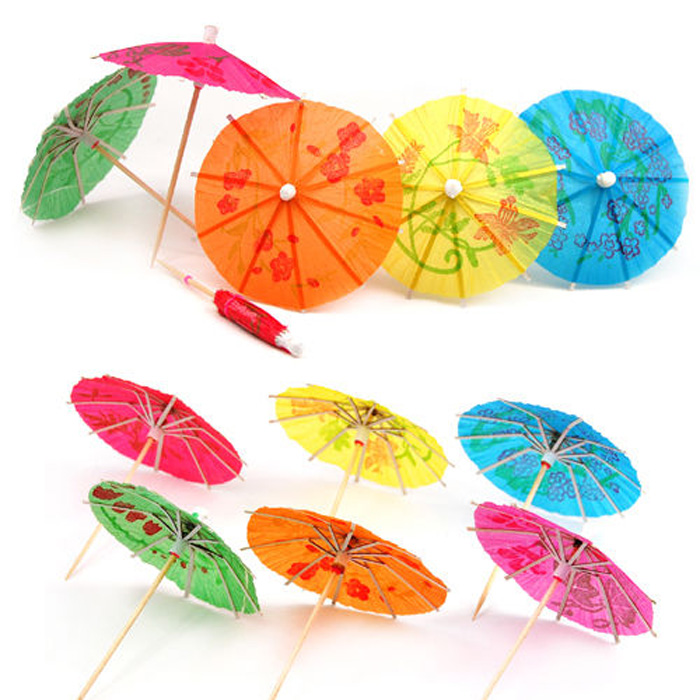

However, the temperature outside matters more than direct sunlight when it comes to the melting of ice. Other bartenders have argued that the umbrella provides shade that slows the melting of ice when the drink is served outdoors. Some bartenders say that the cocktail umbrella is only decorative.

The true purpose of the cocktail umbrella is unknown. The cocktail umbrella became synonymous with tiki cocktails, so much so that the drinks are often called "umbrella drinks". Tiki bars like Trader Vic's and Don the Beachcomber took advantage of the tiki craze, inventing slews of cocktails with a key identifying factor: a cocktail umbrella. That, combined with Hawaii's statehood and the rise of commercial air travel in the late 1950s, led to an explosion in the popularity of tiki culture dubbed the "tiki craze". With the rise of the middle class after World War II came families with disposable income. According to an Eater article published in 2015, many people, during the difficult times faced during the Great Depression, saw the South Pacific as "a place of exotic abandon, where you didn't have to work for a living." Many poor Americans saw tiki culture as an escape from reality. Tiki culture craze Ĭocktail umbrellas are a Great Depression-era invention, but they did not take off in popularity until after World War II. Afterwards, both of the bartenders began to use the umbrellas in tropical drinks. It is there that Beach and Yee traded cocktail ideas, recipes, and somewhere along the line, cocktail umbrellas. Some speculate that it’s because the bar already stocked the umbrellas as toothpicks or decoration, so they were more readily available.Īnother theory exists that Beach met Yee while vacationing in Hawaii after World War II. In 1959, Yee switched to the cocktail umbrella for reasons unknown. Yee stated that he initially would use a sugar cane stick as a garnish for his tropical cocktails, but upon seeing how guests would set the sticks in ashtrays and dirty them, switched to Vanda orchids in 1955. Yee of the Hilton Waikiki was the first to use a paper parasol in a beverage in 1959 during the Tiki culture craze of the 1950s. Īccording to Hawaiian-themed author Rick Carroll, Hawaiian bartender Harry K. According to Bergeron’s son Joe, Trader Vic’s used the paper parasols until their production was halted by World War II. Beach sold his merchandise, including the cocktail umbrellas, to Victor Bergeron, owner of the Emeryville, California-based bar chain Trader Vic’s. According to cocktail historian Dale DeGroff, Beach started the trend in 1932 after spending much of his time collecting things from the world, most notably from the South Pacific. One possible source is Donn Beach, owner of the Hollywood, California-based restaurant and bar chain Don the Beachcomber. It is not quite certain exactly when the cocktail umbrella came into use. This is due to the fact that the Hawaiian margarita contains tequila instead of rum. Following this definition, drinks such as pina colodas would be considered tiki drinks, but ones like the Hawaiian margarita would only be considered tropical. To be considered a tiki drink, the cocktail must contain rum and exotic fruit juices. However, they are not all tiki drinks, as some would call them. Most drinks with cocktail umbrellas are tropical drinks. As a result, they indicate their country of origin.

A sleeve of folded newspaper is located under the collar or base of the cocktail umbrella and is made out of recycled paper from either China, India or Japan. A small plastic retaining ring is often fashioned against the stem, a toothpick, in order to prevent the umbrella from folding up spontaneously. The ribs are made from cardboard in order to provide flexibility and to hinge so the umbrella can be pulled shut much like an ordinary umbrella. The umbrella is fashioned out of paper, which can be patterned, with cardboard ribs.


 0 kommentar(er)
0 kommentar(er)
